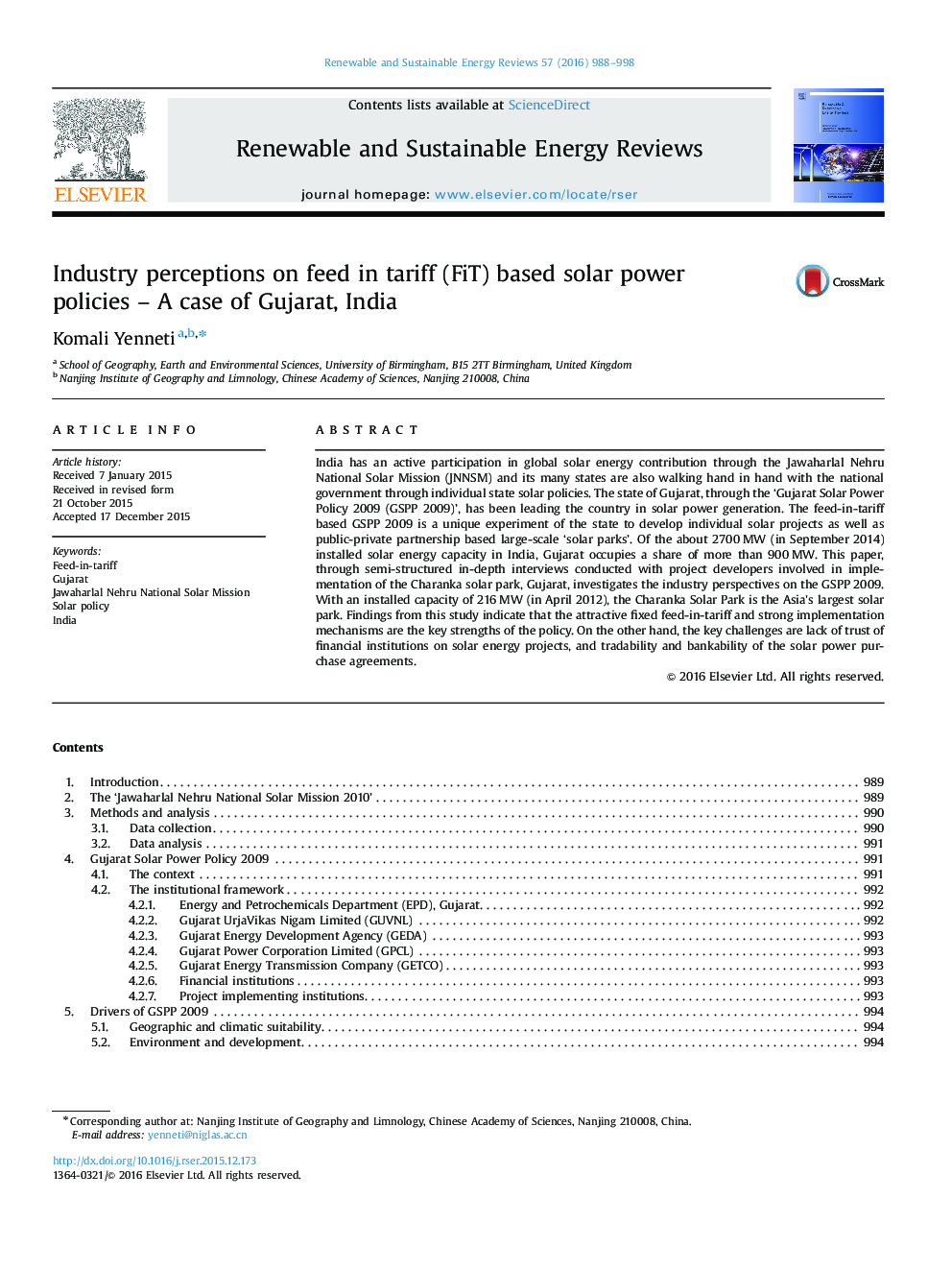| Article ID | Journal | Published Year | Pages | File Type |
|---|---|---|---|---|
| 8114815 | Renewable and Sustainable Energy Reviews | 2016 | 11 Pages |
Abstract
India has an active participation in global solar energy contribution through the Jawaharlal Nehru National Solar Mission (JNNSM) and its many states are also walking hand in hand with the national government through individual state solar policies. The state of Gujarat, through the 'Gujarat Solar Power Policy 2009 (GSPP 2009)', has been leading the country in solar power generation. The feed-in-tariff based GSPP 2009 is a unique experiment of the state to develop individual solar projects as well as public-private partnership based large-scale 'solar parks'. Of the about 2700 MW (in September 2014) installed solar energy capacity in India, Gujarat occupies a share of more than 900 MW. This paper, through semi-structured in-depth interviews conducted with project developers involved in implementation of the Charanka solar park, Gujarat, investigates the industry perspectives on the GSPP 2009. With an installed capacity of 216 MW (in April 2012), the Charanka Solar Park is the Asia׳s largest solar park. Findings from this study indicate that the attractive fixed feed-in-tariff and strong implementation mechanisms are the key strengths of the policy. On the other hand, the key challenges are lack of trust of financial institutions on solar energy projects, and tradability and bankability of the solar power purchase agreements.
Related Topics
Physical Sciences and Engineering
Energy
Renewable Energy, Sustainability and the Environment
Authors
Komali Yenneti,
